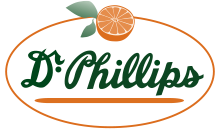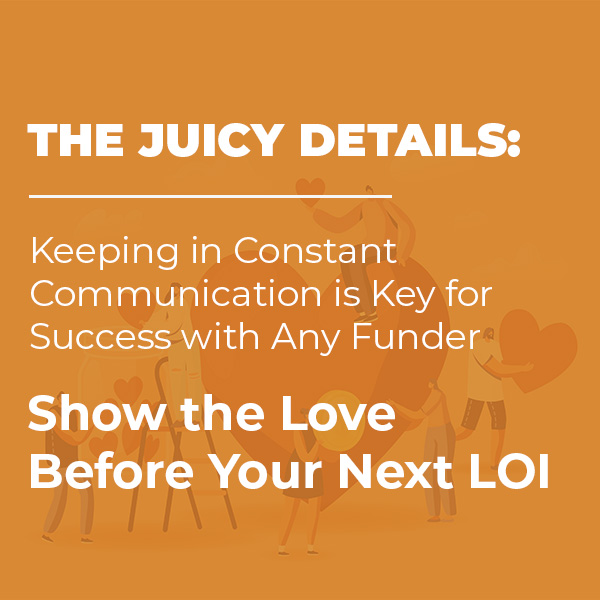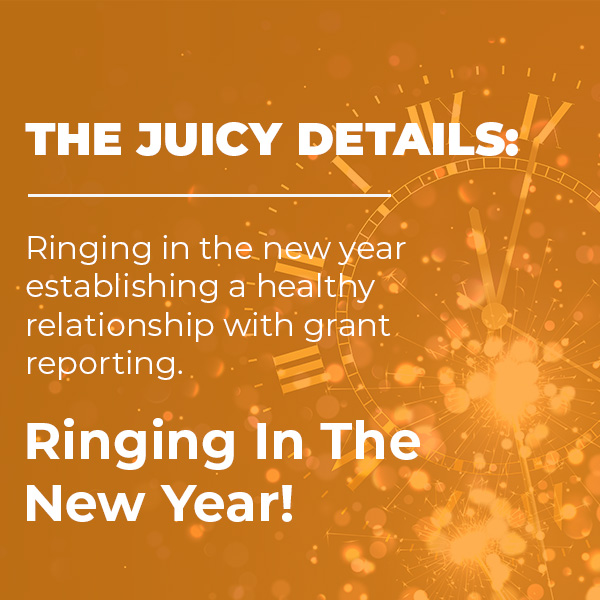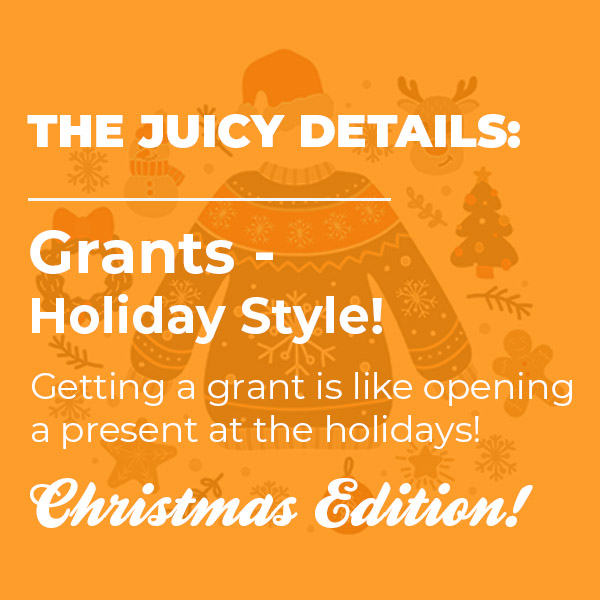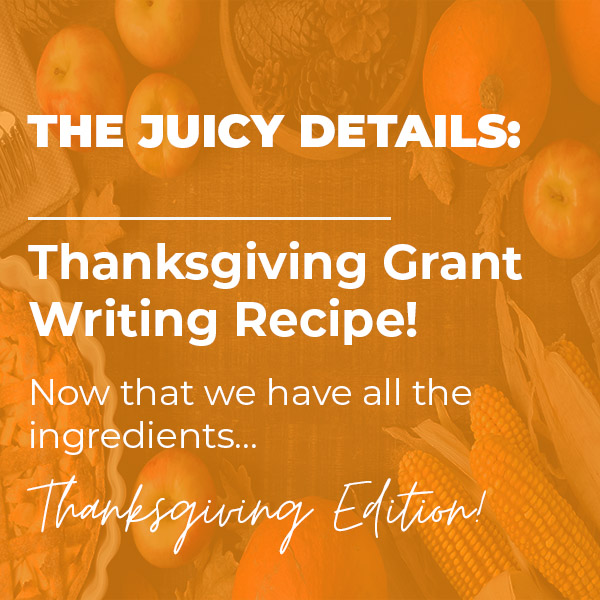

Hi! I’m Kate Martin, the Grants Manager at Dr. Phillips Charities! Welcome to our blog “The Juicy Details”! We’ve started this blog with you in mind – and by you, I mean grant writers, nonprofit organizations seeking grant funding, or anyone who is curious about grant writing.
We’ll talk about good grant writing, share resources, and of course talk about what Dr. Phillips Charities wants to see when we receive Letters of Intent and Grant Proposals. Want to know the Juicy Details? Read below!

Thanksgiving Grant Writing Recipe
Happy Thanksgiving! While we can’t quite share an in person Thanksgiving, we can share a few grant writing tips this November. After gathering all the grant goodies from our last post, we are ready to put all those delicious ingredients together in our Grant Writing Recipe!
Effective Grant Writing Recipe
From the Kitchen of Dr. Phillips Charities
- Carefully Read the Recipe.
Grants, sort of, come with a recipe made up of the grant guidelines, FAQs, and the questions the funders ask. Read them, understand them (ask questions about them, if needed), and follow them!
- Gather the Ingredients on the Kitchen Counter.
Using your checklist and research (see the “Grant Goodies” post) gather all your program information together and write it all down – just like you spread all the ingredients out on your kitchen counter before cooking.
Be as specific as possible and describe the program, its impact, and how many people you will benefit. Don’t worry about the best wording just yet – you can do that when you edit and revise later. Stream of consciousness, get it all out!
Best grant ingredients often include:
-
-
- What your Mission and History are (what do you do?)
- Who your project helps
- What problem you are trying to solve and why it matters
- What your end goal is and what measurement will show you achieved it
- Why you should get funding instead of someone else
- The amount of money you need to run the project, what your other funding sources are, and how will you fund the program in the future
- Who your key staff for the project are, what their experience is, and your organization’s expertise.
-
Having the right ingredients helps show that you have the capacity and ability to run the project and the knowledge to accurately measure your success.
- Closely Follow the Recipe to Mix the Ingredients Together.
Move all your ingredients into the right “bowls” to address all the grant proposal questions. Double check the recipe! Write your narrative responses in realistic terms so you aren’t talking about a gourmet meal when you don’t have a chef. (Hint: it’s extremely rare for 100% of people served to improve, decrease, or do anything)
- Set the Oven Timer for Good Results.
SMART (Specific, Measurable, Attainable, Realistic and Time-Bound) goals are your friends. Set a timer on when you’ll test for results, state your goals, and describe how you will show you succeeded in achieving them.
Talk about outcomes not outputs. OUTPUTS are things you do, like serving 150 children Thanksgiving Dinner. OUTCOMES, on the other hand, are things you achieve. For example, 85% of the children served increased their turkey consumption by one pound when gravy was added on top.
Results-oriented, measurable outcomes with a deadline.
- Don’t Forget the Sides.
Just like you can’t have Thanksgiving dinner without sides like cranberry sauce, stuffing, and sweet potatoes, you can’t have an effective grant proposal without connecting your outcomes to program details, deliverables, and results!
Make the connections between your project goals and the funder’s goals. Remember you’re the expert on your work, your project, and who you serve. So tell the project’s story like it really is the first time the funder has heard Uncle Al tell the same ol’ story you now know by heart.
Share why the community has a problem, how will solve it, how your solution differs from others, and why your solution will make a difference. Use data, focus on the main problem, and highlight why it’s urgent to tackle the problem right now.
- Save Room for Pumpkin Pie!
Outline your funding sources and your project’s long-term sustainability plan – a blueprint of how you’ll generate revenue and keep the project going after the grant term ends helps funders identify a winner.
Project Budgets are your opportunity to tell a funder (in numbers) exactly how you’ll use your resources (and the funder’s money) from an operational standpoint. Be clear and accurate in specifying the services provided. Double check your numbers and make sure they connect to your narrative. If you aren’t that good with numbers, include your finance team in the process.
Think of this part of your grant writing like how you figure out how to eat a little bit of every one of your favorite Thanksgiving dishes while still saving room for pumpkin pie!
- Football, a Nap, and a Visit with Friends/Family.
Thanksgiving Dinner is usually capped off with a football game, a nap and a visit with friends and family. The grant making equivalent? Editing, setting your writing aside, and getting a friend or colleague to read the grant proposal and suggest edits.
Edit so that you’re writing in short, easily understandable sentences. Your project may be complicated, but your sentences don’t need to be. When editing, triple check that you followed the instructions and grant guidelines, provided what was asked for, and told the story clearly in both the narrative and the budget.
After all that writing and editing, let it rest. Don’t look at it again for 24 hours. Hand it to a friend or colleague to read over and make suggestions. Then, take those suggestions into your final edit, read it one more time, and submit it!
After all that, it’s time to sit back and wait for Christmas to arrive… hopefully with a gift under the tree in the shape of a nice, big grant award!
Happy Thanksgiving!
